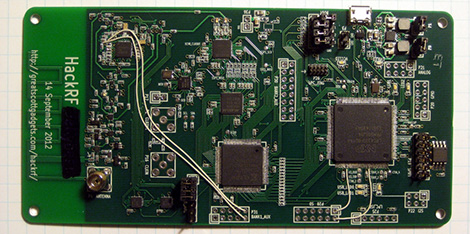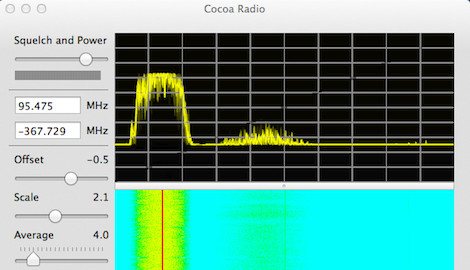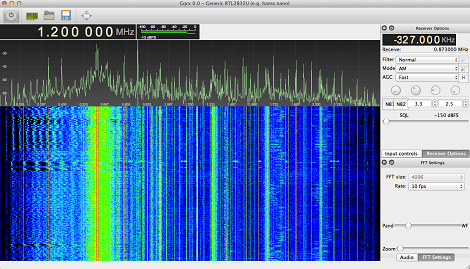
By now most Hackaday readers should be familiar with this year’s latest advance in software defined radio. With a simple USB TV tuner dongle, it’s possible to receive FM broadcasts, GPS data from satellites, and even telemetry from aircraft flying overhead. There is one limitation to this setup, though: it’s receive only. Hacker extraordinaire [Michael Ossmann] is looking to make a better software defined radio called the HackRF.
The HackRF is an incredibly ambitious project – able to receive just about anything between 100 MHz and 6 GHz (this includes everything from the top of the FM radio band to cordless phones, cell phones, WiFi, and basically any radio technology that has been commercialized in the last 15 years), the HackRF is also able to transmit. Yes, with the HackRF it’s possible to build your own software-defined WiFi module, or just broadcast bogus GPS information.
Compared to the $20 TV tuner SDR dongles we’ve played around with, the HackRF isn’t exactly cheap. [Mossmann] figures he’ll be able to sell the device for about $300. A fair bit of change, but much, much less than professional, commercial SDR solutions.
A very cool advance in the state of SDR, but reason dictates we must suggest that everyone who wants a HackRF to start studying for their amateur radio exam now. Being a licensed radio operator won’t stop you from any sort of malicious intent, but with at least with licensing comes with the possibility of knowing what evil you’re doing.
You can check out the wiki for the HackRF over on the gits along with the current hardware design

















